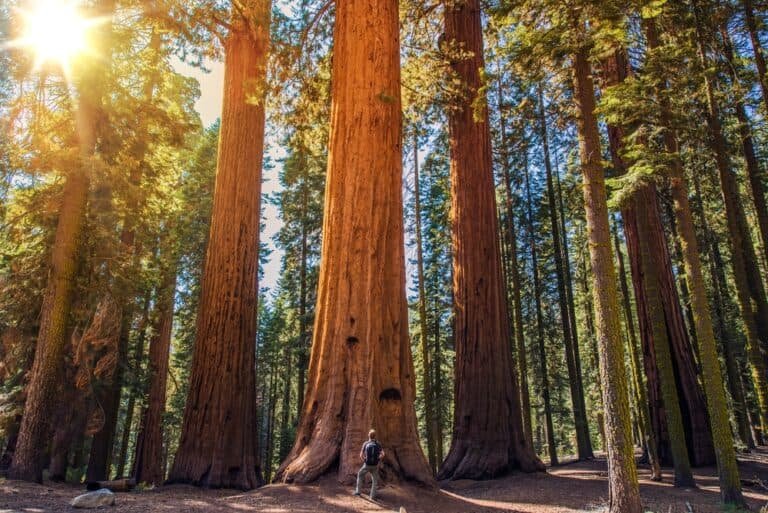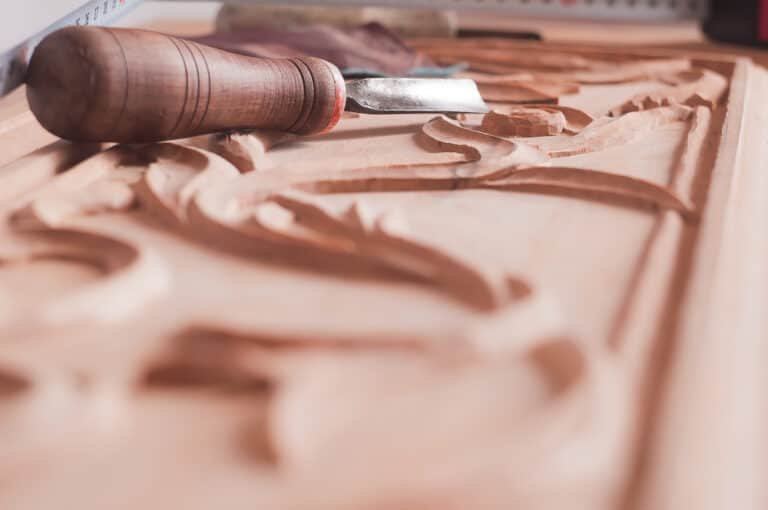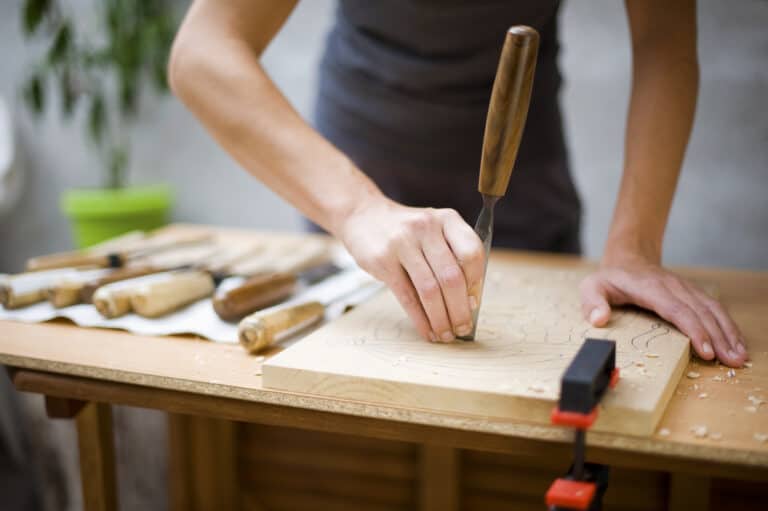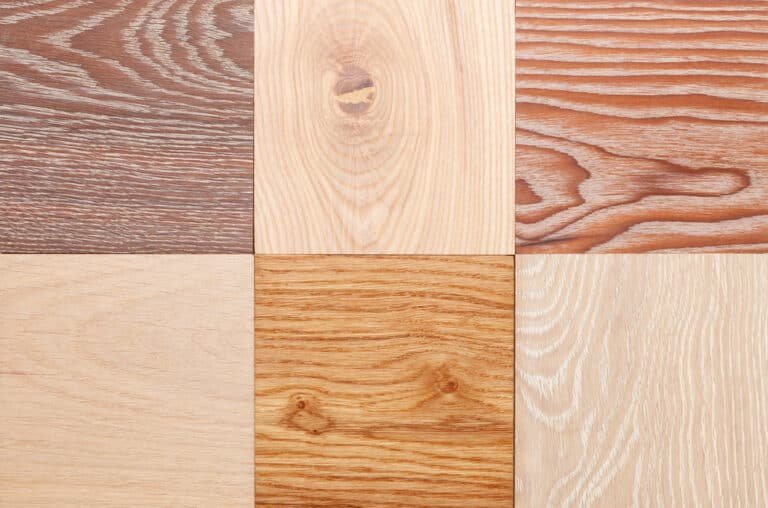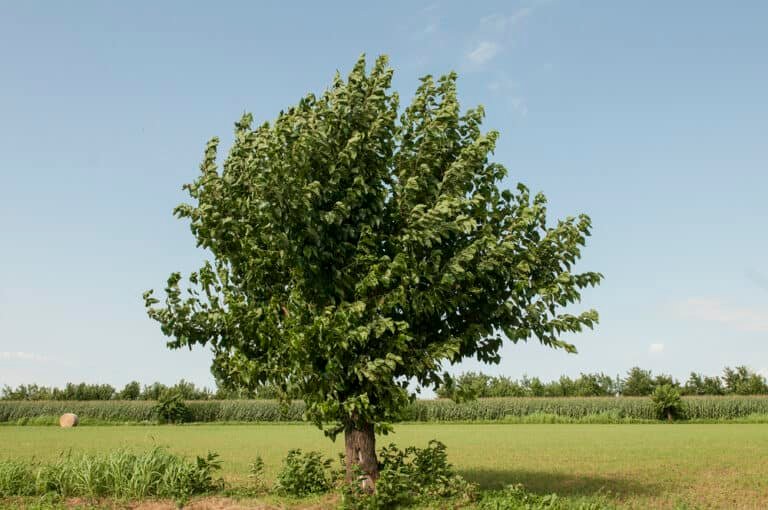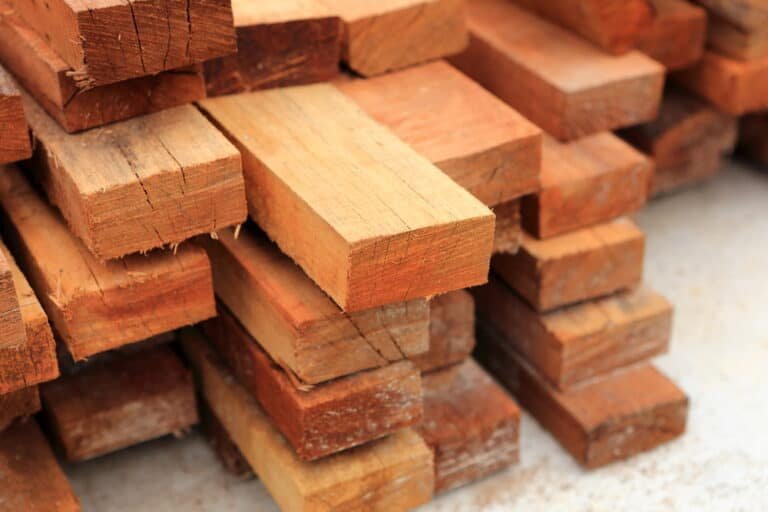Cedar is good for wood carving due to its softness, straight grain, and ability to hold a long-lasting finish. Use yellow cedar, white cedar or eastern red cedar. Western red cedar and other types of cedar wood are not ideal for wood carving.
Best Types of Cedar for Carving:
- Eastern Red Cedar: Denser and harder, making it better for detailed work, with a beautiful red hue.
- Yellow Cedar: Slightly softer but accepts treatments well and is lighter, making it suitable for lightweight carvings.
- Eastern White Cedar: Medium hardness, easier to carve for medium detail work, and usually less expensive than red cedar.

Pros of carving with cedar:
- Straight Grain: Cedar has a straight and evenly spread grain, which facilitates clean cuts and is particularly helpful for beginners learning to achieve finer details in their projects.
- High Durability: Despite being a softwood, cedar has excellent resistance to rotting, decaying, and insect attacks, making it suitable for outdoor projects.
- Lightweight: Cedar’s light weight makes it easy to handle and control, which is beneficial for intricate carving work.
- Attractive Appearance: Cedar has a unique pinkish-red color with purple tinges, adding a modern and attractive look to carving projects.
- Affordability: Cedar is readily available and reasonably priced, making it a cost-effective option for carving projects.
- Easy to Stain and Finish: Cedar takes stains and finishes well, allowing for customization of the final appearance.
Cons of carving with cedar:
- Brittleness: Cedar’s softness can lead to brittleness, making it prone to chipping and splitting if not handled carefully.
- Requires Regular Maintenance: To maintain its appearance and durability, cedar requires regular maintenance.
- Color Fading: Cedar’s color can fade away easily over time, especially when exposed to the elements.
- Sensitivity: Cedar is highly sensitive to carving tools, and using dull tools can result in scratches and scars on the wood.
Cedar Carving Tips:
- Carve Along the Grain: To prevent chipping and achieve a smooth surface, always carve in the direction of the wood grain.
- Use Sharp Tools: Ensure your carving tools are well-sharpened to achieve finer details and a smoother finish.
- Avoid Stop Cuts: While stop cuts can help prevent chipping, they can also crush the wood fibers in cedar, leading to splitting. It’s recommended to avoid stop cuts for finer work.
Why Cedar is Good for Carving
Cedar is beloved by woodcarvers all over the world over for a bunch of different reasons.
We run through some of the most common reasons below.
Soft and Easy to Work With
For starters, cedar is a softwood, making it extremely easy (compared to hardwoods) to work with your carving tools. It’s easy to finish, too!
Woods like oak, walnut, and mahogany have beautiful grain patterns and can produce special projects. But working with them – particularly as a newbie – is always a real challenge.
One mistake with those materials and you can be out a mountain of money (and a lot of time).
They also require a really steady hand and a bit of extra elbow grease to carve consistently.
Cedar, on the other hand, cuts like soft butter in comparison.
You’ll be able to carve, shape, and mold your project without brute forcing everything the way you might with a hardwood.
Lightweight But Resilient
Don’t let the lightweight nature of cedar fool you into thinking it’s some “pushover” material, either.
Beloved for its unique strength-to-weight ratio (and a bunch of other reasons), cedar is a lot more resilient and durable than people give this material credit for.
The softness of cedar makes it a little easier to “bruise” than other woods (more on that in just a moment). But for the most part, this lightweight wood is easy to carve and won’t fall apart on you, either.
Finishes Easy
Finishing cedar is super straightforward, thanks to its natural beauty.
You don’t have to go crazy to coax a gorgeous finish out of cedar. Many people rub a little bit of oil into cedar now and again to maintain its rich, ruby color.
Sanding and smoothing cedar is effortless, too.
Natural Resistance to Moisture
Lastly, cedar has natural properties that resist moisture, rot, and general decay – especially when exposed to outdoor elements and lots of water.
This makes cedar a fantastic choice for woodcarvers who will display their work outdoors or want to work on projects permanently installed outside.
Related: Carving with Pine
Disadvantages of Carving Cedar
All that said, you need to be aware of some disadvantages to carving cedar.
Not All Cedar is Equal
For one thing, not all cedar is created equal – and not all cedar is as friendly to carvers as other types.
Eastern red cedar, yellow cedar, and Eastern white cedar are where you will want to invest your money. Most other types of this wood will fight you a lot more, making your carving project much more challenging to pull off successfully.
Don’t just stroll down to the local hardware store and grab any old lump of cedar.
You won’t love the results.
Prone to Dents and Dings
Because cedar is so soft, it tends to bruise, dent, and ding when it’s dropped or bumped.
You can steam some of these blemishes out of most projects you’re working on, but some will be almost impossible to recover. The softness of cedar and ease of workability still make it an attractive choice to carve.
Doesn’t Maintain Tight Detail Work
Another disadvantage to using cedar wood for your carving project is that detail work becomes more challenging to pull off successfully.
Thin, narrow, or extreme carved details will be prone to breaking, splitting, or even tearing out completely.
Once again, this circles back to the softness of cedar wood as a carving material.
All you have to do to avoid these kinds of problems is be careful when you’re doing detail work, recognize the limitations of the material you are working with in the moment, and try to find ways to accentuate details a little “larger than life” rather than trying to be really intricate.
You’ll appreciate this the first time you do detailed work on a cedar piece, and – always at the last moment – it tears out or falls off completely.
It happens to all of us. Try not to sweat it!
Related: Using Cherry Wood for Carving
Cedar Carving Ideas
- Totem Poles: Cedar is traditionally used by Native American tribes of the Pacific Northwest for carving totem poles, which are monumental sculptures featuring a variety of figures.
- Wood Spirits and Masks: Carvers often create detailed faces, wood spirits, and masks from cedar wood, taking advantage of its softness and workability.
- Decorative Panels: Cedar’s attractive grain makes it a popular choice for decorative wall panels, often featuring intricate designs and patterns.
- Relief Carvings: Cedar is suitable for relief carving, where images are carved into a flat panel, creating a three-dimensional appearance.
- Sculptures: From abstract forms to detailed animal figures, cedar wood’s versatility allows carvers to create a wide range of sculptures.
- Signs and Plaques: The durability of cedar makes it ideal for outdoor signs and plaques, which can be carved with names, addresses, or decorative motifs.
- Furniture Accents: Cedar can be used to add carved accents to furniture, such as headboards, chair backs, and decorative legs.
- Garden Ornaments: Carvers often use cedar to create durable garden ornaments, like birdhouses, benches, and decorative sculptures that can withstand the elements.
- Canoe Paddles: Cedar’s lightweight nature makes it a good choice for carving decorative and functional canoe paddles.
- Boxes and Containers: Small cedar boxes and containers with carved lids are popular for their aromatic scent and beautiful presentation.
Some Closing Thoughts on Carving with Cedar
If you are trying to figure out whether or not it’s a good idea to carve a couple of projects in cedar, we recommend you take the plunge to get a feel for how this material responds to your carving tools.
As mentioned earlier, you want to be a little careful with detailed and more intricate carvings when working in cedar. But aside from that, this is a beautiful material that can help you learn and develop your carving skills.
Should you go down this road, try to get your hands on Eastern red cedar (Eastern, not Western), yellow cedar, and Eastern white cedar.
Yellow cedar will probably be the softest of the bunch (and easiest to work with for newbies), while Eastern white cedar is the hardest of the pack and should be safe for more involved designs.
Try to avoid western red cedar, and other types of cedar wood as they behave completely differently.
At the end of the day, you can rest easy knowing that cedar is a quality carving wood.
It’s a great option, especially if you’re looking to carve projects that spend time outdoors!
